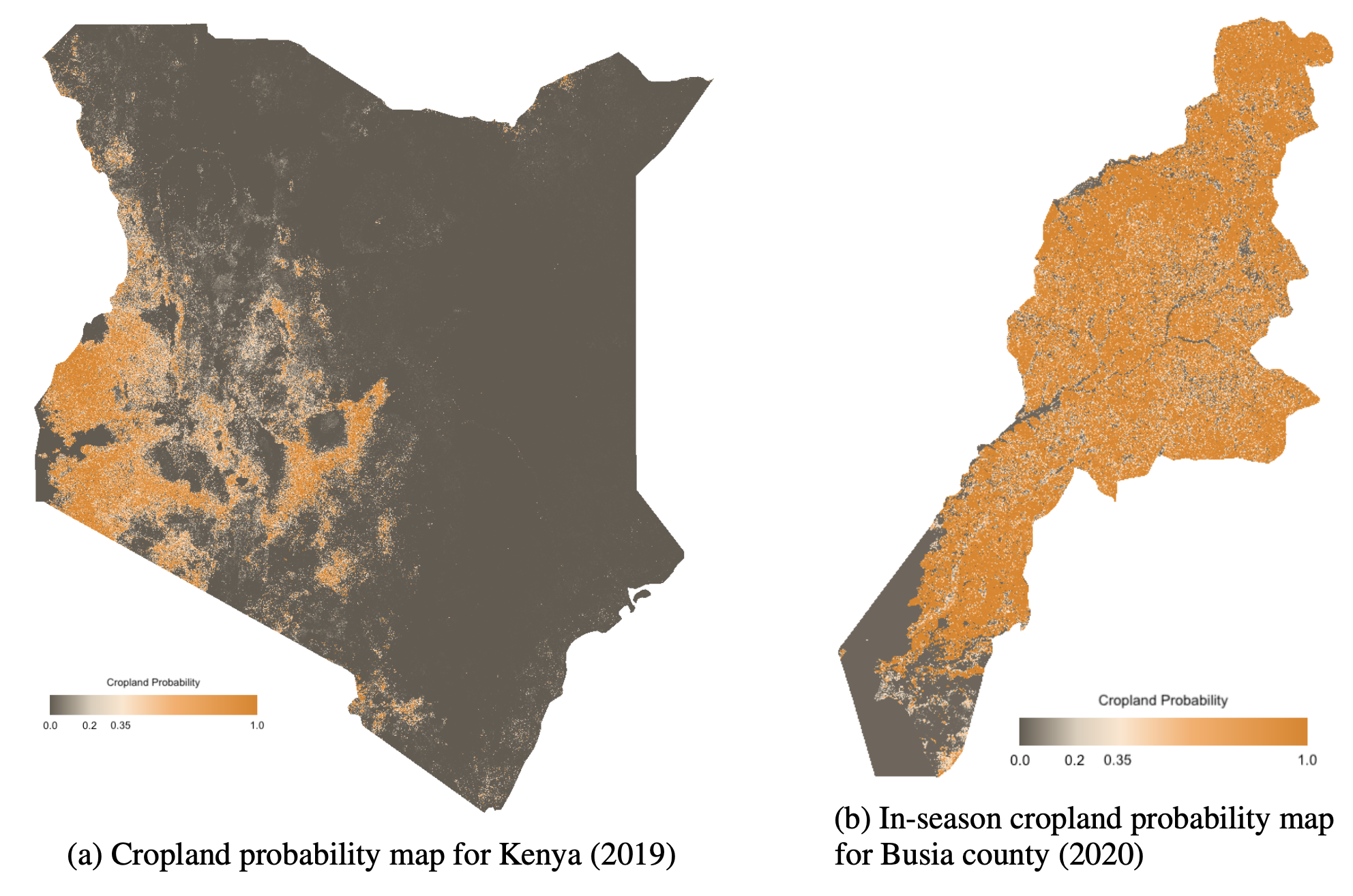Annual and in-season mapping of cropland in Kenya
This repository contains code and data to generate an annual and in-season crop mask for Kenya. Two models are trained - a multi-headed pixel wise classifier to classify pixels as containing crop or not, and a multi-spectral satellite image forecaster which forecasts a 12 month timeseries given a partial input:
These can be used to create annual and in season crop maps. This repository contains the code to do this for Kenya, and Busia county in Kenya:
These maps are available on Google Earth Engine:
In addition, they are available on Zenodo.
The model which originally accompanied the paper requires data from Plant Village and One Acre Fund. We thank those organizations for making these datasets available to us - please contact them if you are interested in accessing the data. The code used to process these datasets is available on the ccai_2020 branch of this repository.
The main branch currently uses Plant Village's open source dataset, hosted on MLHub (but copied into the data folder here for convenience).
The main entrypoints into the pipeline are the scripts. Specifically:
- scripts/export.py exports data (locally, or to Google Drive - see below)
- scripts/process.py processes the raw data
- scripts/engineer.py combines the earth observation data with the labels to create (x, y) training data
- scripts/models.py trains the models
- scripts/predict.py takes a trained model and runs it on an area
The split_tiff.py script is useful to break large exports from Google Earth Engine, which may be too large to fit into memory.
Anaconda running python 3.6 is used as the package manager. To get set up with an environment, install Anaconda from the link above, and (from this directory) run
conda env create -f environment.ymlThis will create an environment named landcover-mapping with all the necessary packages to run the code. To
activate this environment, run
conda activate landcover-mappingIf you are using a GPU, environment.gpu.yml additionally installs cudatoolkit so that pytorch can use it too.
Earth engine is used to export data. To use it, once the conda environment has been activated, run
earthengine authenticateand follow the instructions. To test that everything has worked, run
python -c "import ee; ee.Initialize()"Note that Earth Engine exports files to Google Drive by default (to the same google account used sign up to Earth Engine).
Running exports can be viewed (and individually cancelled) in the Tabs bar on the Earth Engine Code Editor.
Exports from Google Drive should be saved in data/raw.
The following tests can be run against the pipeline:
black . # code formatting
mypy src # type checkingIf you find this code useful, please cite the following paper:
Gabriel Tseng, Hannah Kerner, Catherine Nakalembe and Inbal Becker-Reshef. 2020. Annual and in-season mapping of cropland at field scale with sparse labels. Tackling Climate Change with Machine Learning workshop at NeurIPS ’20: December 11th, 2020
The hand labelled dataset used for training, and the crop maps, can be found at https://doi.org/10.5281/zenodo.4271143

